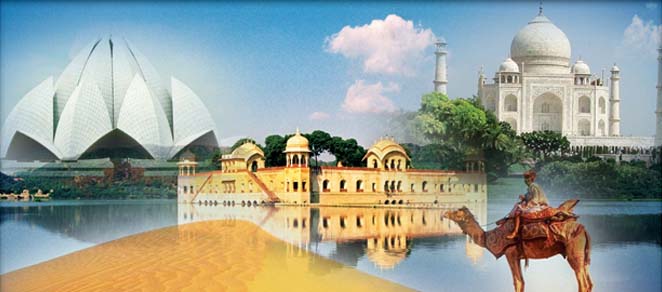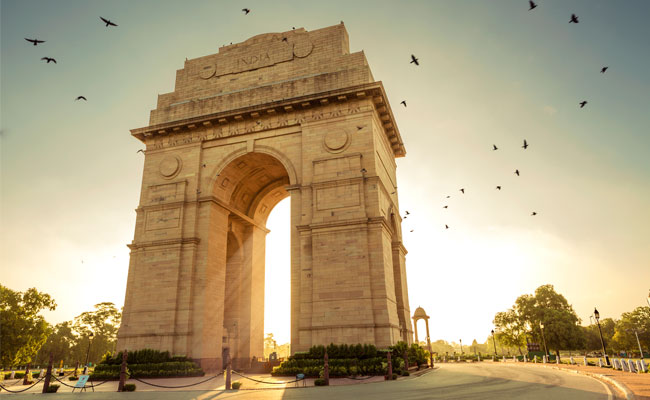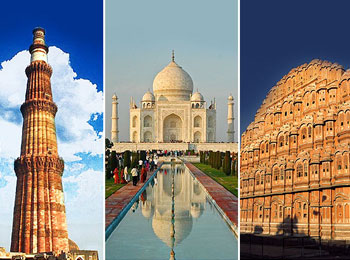Top Tourist Attraction To visit During Triangle Tour :-
Delhi, Agra and Jaipur these three Indian cities make up the Golden Triangle of traveling in India known to all. The golden triangle tour is a quintessential introduction to the rich culture, tradition and history of India, especially for the first time travelers. The 6 days and 5 nights holiday package consists a tour to major destinations of India – Delhi, Agra and Jaipur. The golden triangle tour is no doubt one of the popular tourist circuits in India that offers a wonderful opportunity to marvel the grandeur, glory and vibrant culture. Moreover, our expert representatives will help you in planning a perfect tour itinerary that will leave you mesmerized with pleasurable memories for lifetime.

The triangle has three important points in the North Indian region making up the route viz. – Delhi, Agra and Jaipur. These places are located at a distance of 200-250 kms from each other and are packed with history, culture and heritage. This diversity makes this route the perfect journey of odds!
When it comes about Golden Triangle, Delhi is the first place who welcomes the visitors and takes to explore the glimpses of Mughal Era and Sultanate. Old Delhi and New Delhi are the two parts of this city. It has everything from monuments, parks, shopping and delicious delicacies. The Major Attraction Of city are Akshardham Temple, Lotous Temple, The Red Fort, India gate, Qutub Minar and much more .

Akshardham temple represents the architectural essence of India’s rich history, culture and tradition. Well-connected by the metro route of Delhi this is a must see destination in the capital city of the country. Lotus Temple is one of the most iconic structures in India and a must see sight for any traveler worth his buck. The Red Fort Built in 1638 by Mughal Emperor Shahjahan, this is a World Heritage site located in Delhi. Red Fort was the home to most Mughal Emperors of the dynasty for up to almost 200 years, and is situated right in the centre of Delhi. Qutub Minar The tallest minar in the country, this is yet another World Heritage site that you must check off from your list of must-see spots in the Golden Triangle trip. India Gate Not to be confused with the similarly named, Gateway of India located in Mumbai. This is a War memorial structure in Delhi and a landmark of patriotic history for Indians.
Agra is the second destination of Golden Triangle. It is the land which has one of the seven wonders of the world. Here you can get lots of Mughal Era’s architecture and Taj Mahal is one of them. Don’t miss to taste the “Agra ka Petha” as it is popular in India and comes into various flavors. The Major Attraction Of The city is Taj Mahal, The red Fort Agra/ Agra fort and much more.
The biggest symbol of love the Taj Mahal is also a World Heritage site and one of the Seven Wonders of the World. No trip to India is ever complete without a glimpse of the Taj Mahal. The Agra Fort is very centrally located and probably the most popular building in Agra after the Taj Mahal. You can actually get a glimpse of the Taj Mahal from Agra Fort.
Jaipur is the last destinations of Golden Triangle and known as The Pink City of india. The majestic fort and monuments are the special treat here. It is the perfect destination for those who wants photography, sightseeing and entertainment. This city is the symbol of royal culture, delicacies etc. Starting from walking through the streets to travelling in a hot air balloon, this city has everything for all kinds of travelers. This is the place with royal heritage and modern culture. The Major Attraction Of city are the Amber Fort. City Palace, Hawamahal, Jantar Mantar, Jaigarh Fort, Nahargarh Fort, Jalmahal (Palace In Water) And Much More Palces To visit in city
Amber Fort is the most magnificent Fort which was started by Raja Mann Singh and later on completed by Sawai Jai Singh in the 18th century. Hawa Mahal the 18th century palace which has rows and rows of windows and screens. The wind constantly flows into the palace giving its name. Jantar Mantar has a lot of sculptures and structures which measures time, track starts and also predicts the eclipse. In the middle of the old town core, City Palace of Jaipur plays home to a royal residence and blends a fusion of architectural styles.
Golden Triangle Tour With Varanasi
Heritage Golden Triangle Tour Package
